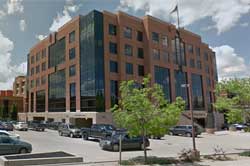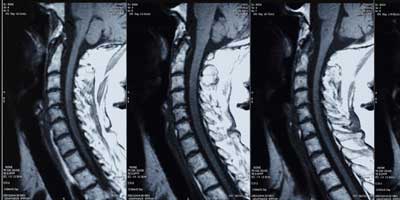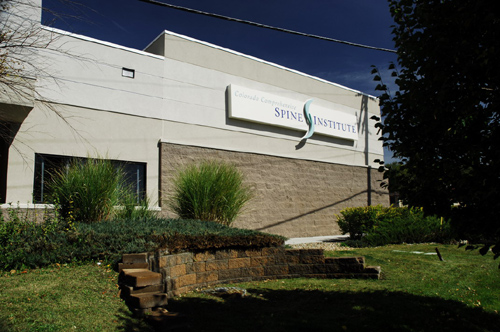Locations

Fax: (303) 762-9292

Minimal Access Spinal Surgery: What is it all about?

Several types of spinal procedures are routinely done at CCSI utilizing minimal access techniques. The development of these techniques originated with the application of endoscopy to microdiscectomy surgery for herniated lumbar discs. It has now been applied to fusion surgeries. Ask a member of our clinical team to see if this might be right for you.
Endoscopic discectomy:
Microdiscectomy surgery for a herniated lumbar disc is traditionally performed through a two-inch incision. The muscle must be peeled off of the surrounding bone to access the disc space. This causes some local muscle damage and can prolong recovery.
The overall goal of this technique is quite similar to that of an open microdiscectomy. The endoscopic discectomy procedure is performed through a small tube placed through a small puncture in the skin. A specialized micro video camera, or a microscope and specialized lighting, is used to visualize the nerves and disc. Removal of disc material is performed with specialized micro instruments.
The benefit of this procedure lies in the reduction of local trauma. Specifically, this means that none of the muscles, ligaments, or other soft tissue structures have been cut or disrupted in anyway. This translates into very little pain after surgery and a greatly enhanced rate of recovery. This technique can often be done on an outpatient basis. Many patients can return to work in just a few days.
The specialists at CCSI can discuss the options of performing this type of procedure with you. This technique is only appropriate for certain types of disc herniations and is not as appropriate for revision surgeries.
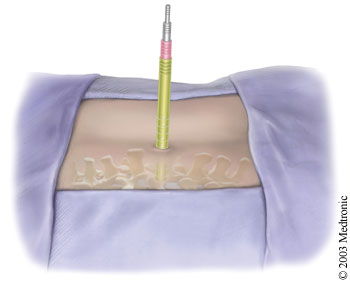
Special tools enable surgeons to work through
a tube inserted in a very small incision
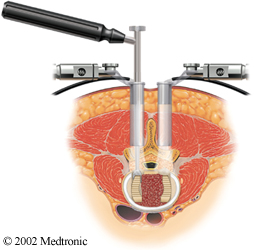
Two tubes in use
Endoscopic lumbar interbody fusion surgery:
New and evolving technologies now allow us to perform lumbar interbody fusion surgery via the micro-open or endoscopic approach. The micro-open approach can be done over multiple levels while the endoscopic approach is most appropriate for spine conditions affecting one level. The surgeons at the Colorado Comprehensive Spine Institute, working with the medical device industry, have been at the forefront of helping to develop this technique. Consequently, we have one of the largest experiences with this new technology in North America. Many surgeons from around the world come to the Institute to learn this new technique.
The endoscopic approach to lumbar interbody fusion can be done through several small punctures in the skin. The micro-open approach requires a small incision that is considerably smaller and less traumatic than the traditional open approach. In both cases, pedicle screw instrumentation is often used and can be performed by placing the screws through small puncture incisions made through the skin. This is called a percutaneous approach. To achieve this, we utilize the new SEXTANT Pedicle Screw System (Medtronic).
The endoscopic or mini-open approach can reduce the patient's hospital stay to one or two days. Postoperative pain is dramatically reduced and overall function is dramatically improved. Return to work and play can be greatly accelerated by utilizing techniques. Ask a member of CCSI team if this procedure is right for you.
Anterior lumbar interbody fusion:
Anterior lumbar interbody fusion involves fusing the spine across the disc space from the front. The surgical access for this procedure is traditionally done through an incision in the left lower abdominal area. This incision may involve cutting through and later repairing, the muscles in the lower abdomen. At CCSI, a mini open approach is available that preserves the muscles and allows access to the front of the spine through a very small incision. This approach maintains abdominal muscle strength and function and is oftentimes used to fusion the L5-S1 disc space.
Many levels may need to be fused from the front of the spine when performing surgery for complex problems such as scoliosis. Unfortunately, the mini open technique does not allow access to multiple levels. Therefore, a more traditional approach is necessary to perform anterior fusion for scoliosis.



